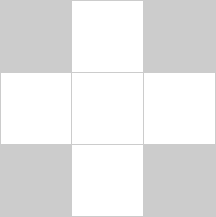
i
i
i
i
i
i
i
i
9
Signal Processing
In graphics, we often deal with functions of a continuous variable: an image is
the first example you have seen, but you will encounter many more as you con-
tinue your exploration of graphics. By their nature continuous functions can’t be
directly represented in a computer; we have to somehow represent them using
a finite number of bits. One of the most useful approaches to representing con-
tinuous functions is to use samples of the function: just store the values of the
function at many different points and reconstruct the values in between when and
if they are needed.
You are by now familiar with the idea of representing an image using a two-
dimensional grid of pixels—so you have already seen a sampled representation!
Think of an image captured by a digital camera: the actual image of the scene that
was formed by the camera’s lens is a continuous function of the position on the
image plane, and the camera converted that function into a two-dimensional grid
of samples. Mathematically, the camera converted a function of type R
2
→ C
(where C is the set of colors) to a two-dimensional array of color samples, or a
function of type Z
2
→ C.
Another example of a sampled representation is a 2D digitizing tablet such
as the screen of a tablet computer or PDA. In this case the original function is
the motion of the stylus, which is a time-varying 2D position, or a function of
type R → R
2
. The digitizer measures the position of the stylus at many points in
time, resulting in a sequence of 2D coordinates, or a function of type Z → R
2
.A
185
i
i
i
i
i
i
i
i
186 9. Signal Processing
motion capture system does exactly the same thing for a special marker attached
to an actor’s body: it takes the 3D position of the marker over time (R → R
3
)and
makes it into a series of instantaneous position measurements (Z → R
3
).
Going up in dimension, a medical CT scanner, used to non-invasivelyexamine
the interior of a person’s body, measures density as a function of position inside
the body. The output of the scanner is a 3D grid of density values: it converts the
density of the body (R
3
→ R) to a 3D array of real numbers (Z
3
→ R).
These examples seem different, but in fact they can all be handled using ex-
actly the same mathematics. In all cases a function is being sampled at the points
of a lattice in one or more dimensions, and in all cases we need to be able to
reconstruct that original continuous function from the array of samples.
From the example of a 2D image, it may seem that the pixels are enough,
and we never need to think about continuous functions again once the camera has
discretized the image. But what if we want to make the image larger or smaller on
the screen, particularly by non-integer scale factors? It turns out that the simplest
algorithms to do this perform badly, introducing obvious visual artifacts known
as aliasing. Explaining why aliasing happens and understanding how to prevent it
requires the mathematics of sampling theory. The resulting algorithms are rather
simple, but the reasoning behind them, and the details of making them perform
well, can be subtle.
Representing continuous functions in a computer is, of course, not unique to
graphics; nor is the idea of sampling and reconstruction. Sampled representations
are used in applications from digital audio to computational physics, and graphics
is just one (and by no means the first) user of the related algorithms and mathe-
matics. The fundamental facts about how to do sampling and reconstruction have
been known in the field of communications since the 1920s and were stated in
exactly the form we use them by the 1940s (Shannon & Weaver, 1964).
This chapter starts by summarizing sampling and reconstruction using the
concrete one-dimensional example of digital audio. Then we go on to present
the basic mathematics and algorithms that underlie sampling and reconstruction
in one and two dimensions. Finally we go into the details of the frequency-domain
viewpoint, which provides many insights into the behavior of these algorithms.
9.1 Digital Audio: Sampling in 1D
Although sampled representations had already been in use for years in telecom-
munications, the introduction of the compact disc in 1982, following the increased
use of digital recording for audio in the previous decade, was the first highly vis-
ible consumer application of sampling.
Get Fundamentals of Computer Graphics, 3rd Edition now with the O’Reilly learning platform.
O’Reilly members experience books, live events, courses curated by job role, and more from O’Reilly and nearly 200 top publishers.

